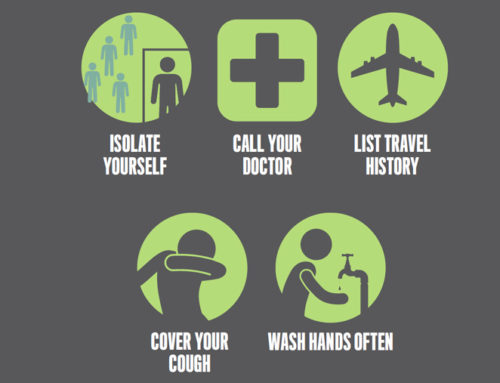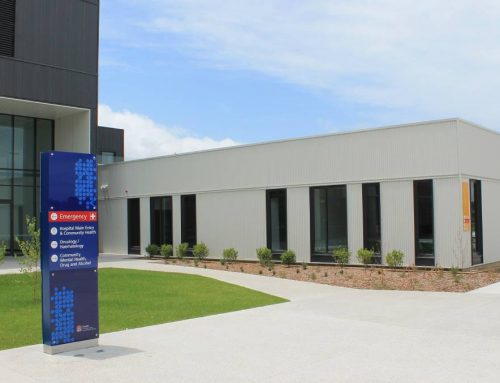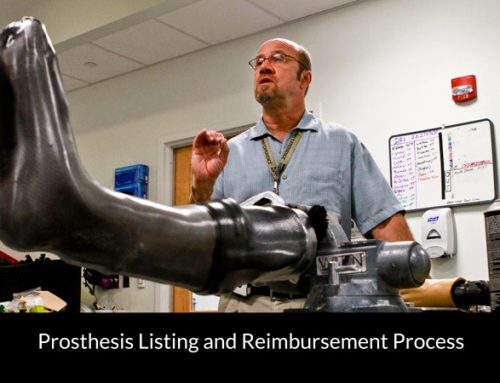POWER OF ONE
Bruce D Shepherd
Working on behalf of deaf children and for the independence of the medical profession
The Medical Journal of Australia
MJA – Volume 187 Number 11/12 – 3/17 December 2007
www.mja.com.au
Power of One As I rose to speak at a seminar of two or three hundred people in 1967, I could feel my heart thumping and a throbbing pain in my lumbosacral region. They had assembled to discuss ways of enabling deaf children to become integrated into the hearing world. I felt my Batson plexus was about to explode. My late wife Annette and I were the parents of two profoundly deaf infants, very new to the game, and on a steep learning curve. We had visited a number of schools for the deaf in the United Kingdom, the United States and Australia. In those days, deaf- ness in a child was seldom recognized before the age of 2 years, frequently later. The usual advice given to grieving parents was to send the child to a dedicated school for the deaf, most often as a boarder. The seminar was attended by educators, bureaucrats, and parents and relatives of deaf children, many of them with years of experience in education. How was I, as a relative newcomer, going to convince them that my belief was correct, that the main obstruction to integration of deaf children and adults into the hearing world was the fact that their education was segregated? In those days, a profoundly deaf child might be sent to a boarding school in a capital city and taught to sign and finger spell, thus becoming a relative stranger, not only to the hearing world, but even to his or her own family. Being a far from gifted speaker, I doubt that I convinced many people on that day. It is hard to change the status quo, especially so in this case, in which many years of planning building and educating had been directed towards segregated teaching. Fortunately, after establishing a number of centers for the education of preschool deaf children, incorporating the principle of teaching these children in the company of hearing children, we managed to establish the principles of early intervention and integration. These principles seem so obvious today, yet they were extraordinarily difficult to institute, even by example. At that time, hearing aids were relatively rudimentary. Graeme Clark ‘s miraculous invention -the cochlear implant -was not yet available, so teaching a profoundly deaf child to communicate orally was sheer hard work. My research indicated that deaf adults in that era, no matter how intelligent they were, seldom, if ever, broke out of the mould of being an employee at the level of a printer or a panel beater. This certainly motivated us. With the help of many wonderful people, we managed to achieve our aim of giving the gift of speech , together with the ability to move comfortably with their hearing peers, to our own children. A multitude of cousins of similar ages helped tremendously in the integration process.
With our children fully integrated into hearing schools, Annette and I felt that the only way to convince the educators of the deaf was to set up our own education program. That was in the late 1960s. We formed our first centre, at the University of Sydney, which opened in 1970.
On 14 February 1972, Annette, my wife, had her first stroke. (This was at a meeting where we were planning to find a candidate to stand for the Australian Senate, with the objective of improving the lot of people with disabilities. ) How the Shepherd Centre survived in those years I don ‘t know. Annette recovered sufficiently to continue her work with the Centre. This was done with great difficulty for her and those around her. In 1981, she suffered a cerebral hemorrhage and suffered the locked-in syndrome until she died in 1986. During her illness, my respect for my colleagues rose to even greater heights and reinforced my conviction that medicine must be for patients and independent of commerce and governments.
In the late 1990s, we funded a pilot study and then managed to persuade the New South Wales Government to bring in an early-diagnosis program for congenital deafness: in August 2000 we handed over screening equipment during Hearing Awareness Week. Now, every child born in NSW is tested at birth for deafness (we have achieved a 97%testing rate), and over 93%of our children, no matter how deaf they are, go on to normal- stream education, many to university. It could reasonably be said that NSW is the best place in the world to be born deaf. Other programs have taken up our methods, and recently I received a promise from the Prime Minister that he would make it part of the next Medicare agreement that all children throughout Australia would be tested at birth for deafness. Our cochlear implant program, in association with Sydney Children ‘s Hospital, is titled “First Sounds ”
At our Shepherd centres, we have at any one time 180 deaf children (about a third of whom have cochlear implants)in our care. We regard parents as the main educators, so they are all very involved in our work. Our head centre is at the University of Sydney, with centres in Canberra, Liverpool, Wollongong, Roseville and Bathurst. Children attend from the time of diagnosis, which may be when the infant is just a few weeks old, to the age of 5.
Doctors and governments
In 1982, convinced that we needed to look after the independence of orthopaedic surgeons, my good friend, the late Dr Phillip Segelov, and I formed an organisation which became the Australian Society of Orthopaedic Surgeons, of which I became the inaugural chairman. When the Hawke government came to power in 1983, I was chairman of the NSW branch of the Australian Orthopaedic Association, the academic body which administers training and accreditation and upholds standards of orthopaedic surgery in this country.
In the early 1980s, the last years of the Fraser government, inflation was rife; the consumer price index, as a measure of inflation, had been rising. One of the major elements of the index was the cost of health insurance. After the change of government in 1983, the new prime minister, Bob Hawke, by abolishing private health insurance and thereby eliminating this cost as an element, was able to cut the consumer price index by 2%. As admitted by Mr Hawke and Dr Neal Blewett (then minister for health)at various times, this was the single motivating factor for the introduction of Medicare in 1984 -nothing to do with care of patients.
By introducing Medicare, the Hawke government (with Paul Keating as treasurer)tipped the whole medical system in this country on its ear. The effect was to make it possible for any person in the community to have free or highly subsidised medical care, no matter what their financial circumstances.
Before this, public hospitals were run by visiting medical officers, most of whom gave their work on an honorary basis; others received a sessional payment which was much less than the cost of running their practices in the corresponding hours. Without consultation with those visiting medical officers, health minister Dr Blewett, with the cooperation of the Labor states and enabling legislation at a state level, said that people who presented themselves to a public hospital, no matter what their financial status, could be treated for nothing. In other words, he was offering our services for free, or for a severely discounted fee, to anyone who sought it. In Dr Blewett ‘s mind, this was the first step towards total employment of the profession by the state. As a condition for Bill Hayden stepping aside for Mr Hawke to become leader of the Labor Party, it was agreed between them that Dr Blewett was to become health minister at least until the election after the advent of the Hawke government. Mr Hayden was determined to nationalise medicine by controlling the hospitals and making private practice so unattractive that doctors would clamour to be employed. To me, this was unacceptable, and led to my resignation, and the resignations of those doctors who agreed with me, from the public hospital system. In so doing, we managed to avoid nationalisation, but only just.
That was the crux of the doctors ‘ dispute in NSW, and to a lesser extent in other states. During the years from 1984, there were numerous assaults on the medical profession ‘s independence and their right to act for the patient rather than for government or big business. Friendships were made and many friendships broken.
We had bomb threats, which on one occasion led to the evacuation of a hospital where I was operating; I had death threats; we were castigated by many in the media for being greedy, despite the fact that many of us were suffering large drops in income because of the time we were giving to the cause. Many doctors sat on their hands. In 1985 I stood for and was elected to the council of the Royal Australasian College of Surgeons. Some time before that, I was told by a television interviewer that the presidents of the Colleges of surgeons, obstetrics and physicians had said that doctors who had resigned from the public hospital system should remember their Hippocratic oath and go back to work.
I was asked what I thought of this. My reply was, ” They are just three silly old men who wouldn’t know what day of the week it was “. To my surprise, this was shown on television that night throughout Australia. On my first day as an FRACS councillor, Mervyn Smith, the incumbent president, remarked, “It ‘s Thursday, Bruce “. I lacked the courage to say audibly, “You are having a very good day, Sir “. Times have changed since the days when I went to Canberra to engage a lobbyist, to be told by the doyen of lobbyists at the time that he would be taking my money dishonestly, because “Bruce, they all hate you “. Nowadays, we have reasonable dialogue, at least at a state level.
At the time I became a councillor of the College of Surgeons, I felt very let down, in fact, betrayed, by the Australian Medical Association (AMA)at a federal level, rather more than at a state level. In 1987, I was poised to resign from the AMA when I, for some reason, felt more positive and decided to form a NSW team of doctors,whom I thought were of good heart, to take some control over the NSW branch of the AMA. We won all but two positions, and every position we competed for. This eventually led to my becoming vice president, then president, of the federal AMA. Shortly after I became president, I met Brendan Nelson, who was then president of the Tasmanian branch of the AMA. He was honest enough to say that he did not admire my public image. Even though he was misguided, I, noting his undoubted talents, was instrumental in enabling him to use these talents to come in from the wilds of Tasmania to become vice president of the AMA, subsequently president, and then to become the local member for the blue-ribbon conservative seat of Bradfield in NSW. He recently told me that he no longer judges people from a distance, a position compelled by his initial judgement of me. I have seen the sacrifice that he has made to achieve what he has, and believe that he and those like him are deserving of our greatest admiration and gratitude.
Looking back, I realise how inept I and those around me were at influencing government. When I started, I had not even heard of a press release, let alone known how to write one and how to attract the attention of the media. Like it or not, politicians are forced to take notice of what appears in the media. This is a minefield, which frequently prevents them from telling the full truth, or even mentioning some subjects, knowing that any slight slip will be seized upon and magnified.
The other element in political influencing is the role of the bureaucrats. It is almost impossible to know every detail of one ‘s portfolio as a minister, but some tend to do very little to organise their departments, and work simply for media attention. It is almost impossible to know whether to be too cautious, or when to be cautious, or when to be valiant. As my friend Martin Flood, a NSW general surgeon, once said, “The bureaucracy is like a cow pat, political parties are like the blowflies;the cow pat remains the same;it is only the blowflies that change “. In the late 1980s, when I was vice president of the federal AMA, with the help of colleagues, I formed the Australian Doctors ‘ Fund with the sole purpose of maintaining the independence of the medical profession, and hence preserving the doctor – patient relationship. We have managed to survive and influence most out- comes affecting the profession to the present day. This Australia-wide group meets every Tuesday morning by phone. It has probably done more than any other single organisation to guide the profession for almost all of the past 20 years. With the irrepressible executive director, Stephen Milgate, and his never-waning enthusiasm, we have managed this survival and influence. For myself, I hope there will always be colleagues who will understand how important the independence of the profession is to the whole structure of our community and fight to preserve it from the never-ending threats of government and commerce.
Summing up
During the time that I have occupied myself with the world of the deaf and the independence of the profession, I have managed to maintain a busy orthopaedic practice and, I believe, a good standard in my specialty. I became responsible for the non- compulsory continuing education of orthopaedic surgeons throughout Australia for 3 years and later became president of the Australian Orthopaedic Association, in 1987. I am a little sad- dened by the fact that I was unable to publish the results of much of my own work because of other commitments; perhaps I was just not motivated enough.
In my dotage, I have continued to head up the six Shepherd centres, with the help of my wife Jennifer, and through one of the Shepherd Centre ‘s pilot studies was able to persuade the NSW Government to institute the test for deafness at birth for every child in the state. I now have the promise of the Prime Minister that this will extend to all states in Australia, but we will need to improve habilitation in some of these states if the advantages of early diagnosis are not to be lost.
To an extent, serendipity has run my life. I don ‘t intend to die for a while and, unlike Mother Teresa, when I do go I shall not bemoan the fact that there is much more to do, but simply hope that there will be many more who will do it.
It remains my intention to achieve early diagnosis of deafness throughout Australia, accompanied by early intense habilitation, enabling most deaf children to attend a normal education stream, with full integration. Having established Australian treatment as the gold standard, I see no reason why this should not spread to the rest of the world, where even in the wealthiest countries the lot of the deaf child and the deaf adult leaves much to be desired. We are, perhaps understandably, an extraordinarily compliant profession, even naïve. Some would say we are “sitting on our balls “, screaming in pain, and too lazy or too frightened to stand up. It is heartening to see, especially in NSW in the past few weeks, that there are many eminent doctors prepared to speak out on behalf of their patients. May this continue and achieve the desired result -abiding independence of our profession and continuation as a profession, not as a workforce.
NB: This is an extracted document
Full Document: Bruce_Shepherd_article_MJA_Dec07




